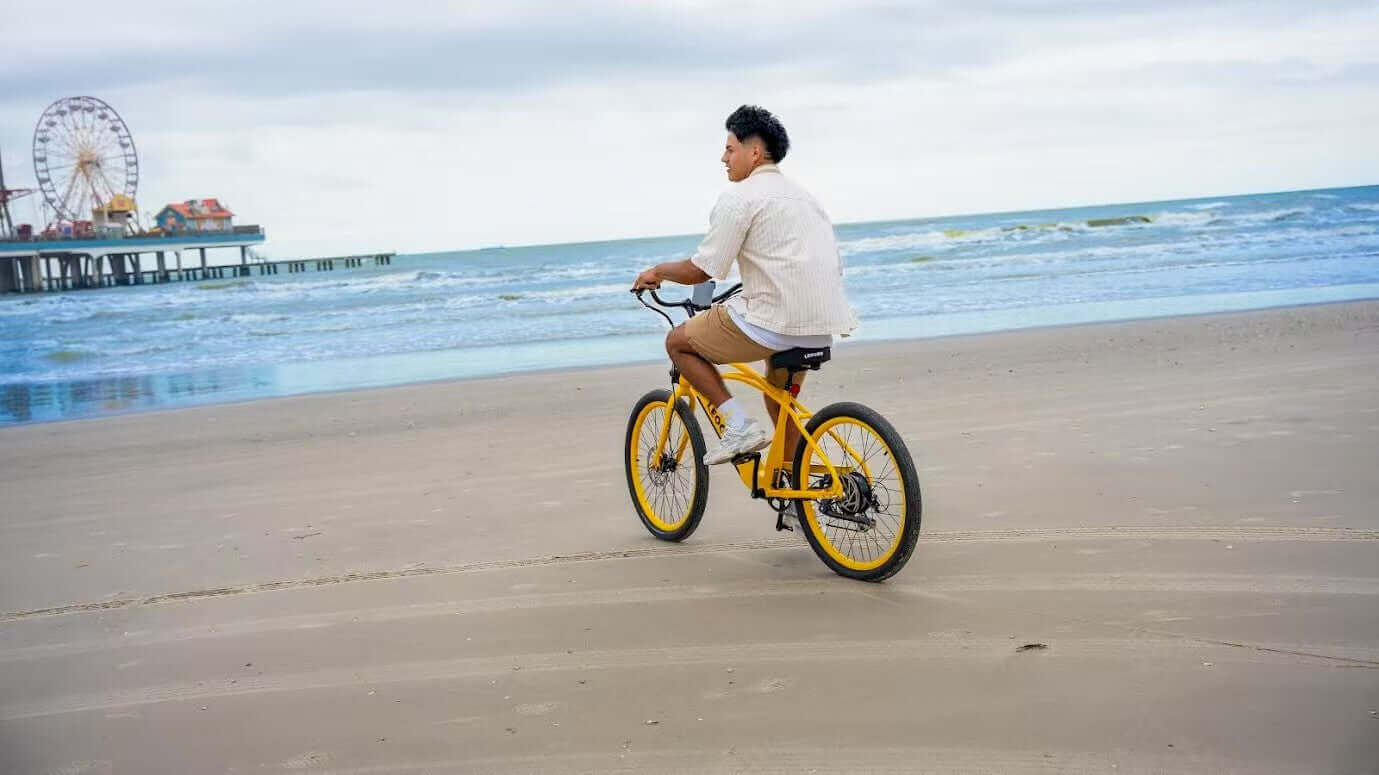
Top Cruiser Bikes for 400 lbs Man: Safe, Strong, and Built to Last
Your Search for a Strong and Stylish Ride Ends Here
Finding a reliable, comfortable, and stylish cruiser bike can be tough. At Leoguar, we've spent years designing, testing, and reviewing bikes for heavy riders—and we know exactly what makes a model safe, durable, and enjoyable for bigger body types. The search for a cruiser bike with a 400 lb weight limit often leads to confusion, with many standard models falling short on safety and strength. For many plus size riders, this can feel like being overlooked in the cycling world—an experience that often leads to frustration or giving up the idea altogether. Finding a bike for overweight persons shouldn't feel like a compromise, and that's exactly why this guide exists. We want to state clearly: the perfect bike for you exists. It's not just about finding a bike that can hold the weight; it's about finding one that provides a safe, smooth, and truly fun riding experience.
This guide combines our engineering expertise with real-world rider feedback. At Leoguar, we cut through the marketing hype and deliver what truly matters when choosing a cruiser bike for a 400 lb man or beyond. Here's what you can expect:
- Understanding the Engineering: We'll break down the specific parts that make a bike strong enough for a 400 lb capacity. And if you're nearing the upper weight limits, we’ll also touch on what makes a heavy-duty bike with 500 lb capacity structurally different and what to watch for.
- Expert Recommendations: We'll review our top picks for 2025, chosen for their strength, quality, and ride comfort.
- Safety and Maintenance: We'll provide useful tips to keep you and your bike safe and in top condition for years to come.
Your journey to finding an exceptional cruiser bike 400 lb capacity starts now. If you're looking for a bike for a 400 lb person that’s reliable and purpose-built, you’re in the right place. Let's get you on the road with confidence.
Why Standard Bikes Fail for Heavy Riders
It's important to understand why simply choosing any bike off the rack isn't safe for heavier riders. Standard bicycles are typically designed and tested for riders weighing up to 250-275 pounds. Going over this limit puts huge stress on parts that are not built for the load, creating serious safety risks. Understanding these potential failure points is the first step toward making a smart and safe choice.
Frame Stress and Fatigue: A standard frame, even if it feels sturdy at first, is not built to handle high loads over time. The tubing walls are thinner, and the welds are not reinforced. Over time, this can lead to tiny cracks, especially around the bottom bracket and headtube, which can result in sudden and serious frame failure.
Wheel and Spoke Failure: Wheels are one of the most common points of failure. Standard cruiser bikes often use single-wall rims and a low spoke count (typically 32 or fewer). For a heavier rider, this is a recipe for disaster. The wheels can easily buckle under the load, and spokes can snap, leading to a complete loss of control.
Braking Problems: Safely stopping is just as important as going. Most standard cruisers use coaster brakes or simple rim brakes. These systems lack the power needed to bring a heavier rider and a sturdy bike to a quick, controlled stop, especially on a downhill slope or in wet conditions.
Component Wear and Failure: Beyond the main structure, other parts are also at risk. The crankset, the pedals, the seat post, and the saddle clamp are all under much more strain. These parts can bend, crack, or fail without warning.
What Makes a Cruiser Bike Work for 400 lbs Man
To find a truly reliable bike, you need to look beyond marketing claims and understand the engineering that defines a true heavy-duty model. A bike with a 400 lb weight limit is a purpose-built machine where every critical part is upgraded for strength and durability. Here's a breakdown of what to look for.
Must-Have Features for Heavy-Duty Cruiser Bikes
- 🛠️ Reinforced Frame
Look for Chromoly steel or thick-gauge aluminum for long-term strength. - 🌀 36+ Strong Spokes
Thick 12- or 14-gauge spokes distribute rider weight and prevent wheel failure. - 🛑 Disc Brakes (Mechanical or Hydraulic)
Provide safe stopping power, even on downhill slopes or wet roads. - 🏍️ Fat Tires (2.5”+)
Increase grip, comfort, and weight distribution on rough or loose terrain. - ⚙️ Forged Crankset + Solid Pedals
Prevents bending or failure under heavier loads.
Strong Bike Frames for 400 lb Riders
The frame is the heart of the bicycle. Its material and design are the main factors that determine its strength and weight capacity.
Materials: Two materials lead the heavy-duty market: Chromoly Steel and reinforced 6061 Aluminum.
Chromoly Steel (4130 Steel): This is the gold standard for high-strength uses. It’s commonly used in building a reinforced bike frame for heavy riders, offering both tensile strength and fatigue resistance for long-term durability. It has very high tensile strength and natural flexibility that helps absorb road vibrations, leading to a smoother ride. While heavier than aluminum, its durability and fatigue resistance are unmatched, making it the preferred choice for bikes designed for maximum load. For a deeper dive into materials, you can learn more by understanding bike frame materials.
Reinforced Aluminum: Standard aluminum frames are light but can be brittle. Heavy-duty aluminum frames use thicker-gauge tubing and are often hydroformed to create stronger shapes. Look for frames that specify 6061-T6 aluminum with visible reinforcements.
Design: Look for oversized tubing and gussets—small, welded pieces of metal that reinforce critical junctions. These details greatly increase the frame's resistance to flexing and fatigue.
Heavy-Duty Wheels and Tires for Big Riders
Your wheels bear the entire load. For a 400 lb capacity, they must be exceptionally strong.
Rims: Double-wall rims are a must. A single-wall rim has only one layer of support, while a double-wall rim has an internal structural wall that creates a stronger, box-like profile. This design is much more resistant to bending and buckling.
Spokes: More spokes equal a stronger wheel. Look for a spoke count of at least 36 per wheel. Furthermore, the gauge (thickness) of the spokes matters. Thicker 12-gauge (2.6mm) or 14-gauge (2.0mm) spokes are essential for distributing the load and preventing spoke failure. The principles of building strong bicycle wheels have proven these factors are critical for durability.
Tires: Wider tires, often 2.5 inches or more ("fat tires"), provide a larger contact patch with the ground. This improves stability, offers significant cushioning for a smoother ride, and helps distribute the load more effectively. A fat tire cruiser bike for heavy riders is especially beneficial for those riding over sand, gravel, or uneven pavement, where extra surface contact improves control and safety. For even more peace of mind, look for puncture-resistant cruiser tires, especially if you're riding in urban areas with debris, gravel, or broken pavement. This small upgrade reduces flats and adds long-term reliability.
Best Braking System for Cruiser Bikes 400 lb Capacity
Powerful, reliable brakes are a critical safety feature. For heavier riders, standard coaster or rim brakes are not good enough.
Disc Brakes: Mechanical or hydraulic disc brakes are the better choice. They operate on a rotor at the center of the wheel, providing much more stopping power than brakes that squeeze the rim. Disc brakes are also far more consistent in all weather conditions, including rain and mud, ensuring you can stop safely when you need to most.
Reliable Components for Bikes for 400 lbs Man
The parts that move you forward also need to be up to the task.
Crankset and Pedals: Look for bikes with steel or solid forged alloy cranksets, as these are much stronger than the cheaper cast alloy cranks found on standard bikes. Pedals should have a solid steel axle.
Gearing: While single-speed cruisers are simple, having multiple gears (typically 3 to 7) can be a huge benefit. Gears allow you to tackle hills more easily and manage your effort on different terrains, reducing strain on both you and the bike. If you're using your bike for extended commutes, choose a long-distance cruiser bike with 7-speed gearing and soft-grip handlebars. For neighborhood rides or grocery runs, a simpler bike for daily errands with 3 speeds may be lighter and more comfortable.
Our Top Picks for 2025
After extensive research into frames, components, and real-world rider feedback, we've selected the best cruiser bikes that are truly built to handle a 400 lb capacity. All picks meet or exceed a bike weight limit of 400 lbs, ensuring structural integrity and consistent performance for larger riders. These models focus on safety, durability, and comfort above all else. It's worth noting that some heavy-duty cruiser bikes may arrive partially assembled due to their size. If you're concerned about handling the shipping weight or setup, look for options labeled as a pre-assembled heavy-duty bike or purchase from a retailer that offers professional delivery.
| Bike Model | Weight Capacity | Frame Material | Brake Type | Key Feature |
|---|---|---|---|---|
| Zize 29er Max 2.0 | 400 lbs | Chromoly Steel | Mechanical Disc | Purpose-built from the ground up for heavy riders. |
| Worksman Cycles Cruiser | 400+ lbs | Fully-Welded Steel | Drum / Disc | Industrial-grade, American-made durability. |
| Firmstrong Bruiser Man | 400 lbs | Steel | Coaster / Disc Option | Classic style with oversized, rugged construction. |
| Leoguar Zephyr Cruiser | 275 lbs | Alloy Aluminum 6061 T4/T6 | Tektro Disc with Cut-Off Sensor | Beach-ready design with swept-back handlebars, 720Wh battery, and up to 60-mile range. |
Zize 29er Max 2.0
Overview:
Zize is a company that focuses exclusively on bikes for heavy riders. The 29er Max 2.0 isn't a modified standard bike; it's an engineered solution. Its design reflects a deep understanding of the forces at play, making it our top pick for those who want no compromises on safety and performance.
Key Specifications:
- Weight Capacity: 400 lbs
- Best For: Ultimate Durability and a custom-fit feel.
- Frame/Fork: Custom-designed Chromoly Steel
- Brakes: Avid BB7 Mechanical Disc Brakes
- Wheels: Double-wall rims with 36 12-gauge spokes
Why It Makes the List: The Zize 29er Max 2.0 checks every box in our "Anatomy of a Heavy-Duty Bike" section. The Chromoly frame, ultra-strong wheels with thick spokes, and powerful Avid disc brakes are all top-tier components chosen specifically for this use. Riders consistently praise its incredibly solid, flex-free feel, which inspires confidence on every ride.
Worksman Cycles Cruiser
Overview:
Worksman Cycles has been making industrial-grade bicycles and tricycles in the USA for over a century. Their cruisers are built for factory floors and delivery routes, meaning they are designed for extreme durability and constant use. They offer a no-frills, bombproof ride that will last a lifetime.
Key Specifications:
- Weight Capacity: 400+ lbs (often rated higher depending on configuration)
- Best For: Unmatched Durability and a lifetime investment.
- Frame/Fork: Fully-welded, heavy-gauge steel
- Brakes: Front Drum Brake and rear Coaster Brake (Disc options available)
- Wheels: Super-strong steel rims with 11-gauge spokes
Why It Makes the List: If your priority is pure, unmatched strength, this is your bike. The frame is practically indestructible, and the wheels use some of the thickest spokes in the industry. While the looks are more industrial than stylish, its performance as a heavy-duty machine is legendary. The drum brake is a reliable, low-maintenance, all-weather braking system.
Firmstrong Bruiser Man
Overview:
The Firmstrong Bruiser successfully blends classic cruiser style with the robust construction needed for a higher weight capacity. Its oversized, elongated frame and available fat tires give it an aggressive look that's backed up by solid engineering, making it a popular choice.
Key Specifications:
- Weight Capacity: 400 lbs
- Best For: Classic cruiser style with heavy-duty capability.
- Frame/Fork: Hi-tensile Steel, extended frame
- Brakes: Coaster Brake (some models have disc brake upgrade options)
- Wheels: Double-wall rims (on fat tire models)
Why It Makes the List: The Bruiser is one of the few widely available "mainstream" cruisers that is explicitly built and rated for a 400 lb load. Its extended steel frame provides a comfortable riding position for taller riders and contributes to its overall strength. While the standard coaster brake is adequate for flat terrain, we highly recommend seeking out a version with a front disc or drum brake for enhanced safety if you plan to ride on varied terrain.
Leoguar Zephyr Beach Cruiser
Overview:
Leoguar brings together coastal style and electric performance in the Zephyr Beach Cruiser. This isn't just a laid-back beach bike with a motor—it's a thoughtfully crafted cruiser built for smooth acceleration, comfort-focused geometry, and stability across sand, streets, and trails. For riders looking for an easy, confident ride with a boost of power, the Zephyr delivers with flair.
Key Specifications:
- Weight Capacity: 275 lbs
- Best For: Comfortable coastal cruising with modern electric support
- Frame/Fork: Step-over frame with front suspension fork (6061 aluminum)
- Motor/Battery: 500W rear hub motor with 720Wh long-range battery
- Brakes: Tektro Hydraulic Disc Brakes with Power Cut-Off
- Wheels: 26" × 2.35" all-terrain cruiser tires
Why It Makes the List: The Zephyr isn’t built for brute hauling—it’s built for everyday ease. From its extra-cushion saddle and swept-back handlebars to the 60-mile real-world range and anti-theft LCD screen, every part of this cruiser is optimized for relaxed yet confident riding. Riders love its balance of power and poise, especially on coastal paths, park trails, or weekend coffee runs. It's a top pick for riders prioritizing comfort, control, and ride-ready design.

Comfort Upgrades for Plus Size Cruiser Bikes
Once you have a strong and safe bike, the next step is to fine-tune it for your personal comfort. A few small adjustments can transform a good ride into a great one. For larger riders, these tweaks often matter more. An extra wide saddle reduces tailbone pressure and prevents numbness, while an upright riding position helps relieve lower back and wrist strain—issues that are magnified under more weight.
Dialing in Your Comfort
The Saddle is Key: The saddle that comes with your bike is a starting point, not a final destination. Every rider's anatomy is different. For maximum comfort on a cruiser, we recommend a wider saddle with dense foam or gel padding. This helps distribute pressure more evenly. Don't be afraid to invest in a high-quality aftermarket saddle; it's one of the most impactful upgrades you can make.
Handlebar Adjustments: Cruiser bikes are known for their swept-back handlebars, which promote a relaxed, upright riding posture. This is excellent for reducing strain on your back, shoulders, and wrists. If the reach still doesn't feel perfect, an adjustable stem can be installed by a bike shop to bring the handlebars closer or raise them higher for a truly customized fit.
Pre-Ride Safety Tips for Overweight Riders
We recommend making this a non-negotiable, 30-second routine before every single ride. It's a professional habit that ensures your bike is as safe as it was designed to be.
1. Tire Pressure Check: Properly inflated tires are crucial. They support the load, prevent damage to the rims, and roll more efficiently. Under-inflated tires are the number one cause of flats and can make the bike feel sluggish and unstable. Use a floor pump with a gauge and inflate to the pressure listed on the tire's sidewall.
2. Brake Test: Squeeze both brake levers firmly. They should feel solid and engage well before they touch the handlebar. The bike should not be able to roll when the brakes are applied.
3. Quick Bolt Check: Give the wheels a wiggle side-to-side to ensure the axle nuts or quick-release levers are tight. Do the same for your handlebars and seat post. Nothing should feel loose.
4. Listen for Noises: As you start rolling, listen for any unusual squeaking, grinding, or clicking sounds. These are often early warnings that a component needs adjustment or inspection.
🤔 Not Sure Which Cruiser Bike Suits You?
✅ If you answer YES to any of the below, consider a heavy-duty cruiser bike:
- Do you weigh over 275 lbs?
- Do you frequently carry cargo or gear?
- Have you experienced broken spokes or a bent frame before?
- Are you looking for a fat tire bike for varied terrain?
If 2 or more apply, a bike with 400 lb capacity is likely your best—and safest—choice.
How to Maintain Heavy-Duty Bikes for 400 lb Capacity
A heavy-duty bike is a significant investment. With a little preventative maintenance, you can protect that investment and ensure your bike remains safe, smooth, and reliable for years.
Regular Cleaning: Wipe down your frame, wheels, and especially the chain and gears after rides. Dirt and grime act like sandpaper, causing early wear on your drivetrain components.
Chain Lubrication: A clean, lubricated chain is essential for a smooth, quiet ride and prevents rust. Apply one drop of bicycle-specific chain lube to each link every 100-150 miles, or more often if you ride in wet conditions.
Professional Tune-Ups: We strongly recommend a full tune-up by a qualified bike mechanic at least once a year. They will check and adjust things that are harder to inspect at home, such as wheel trueness, hub bearing tension, and bottom bracket integrity—all areas that are under higher stress on a heavy-duty bike.
Brake Pad Monitoring: If your bike has disc brakes, the pads will wear down over time. Heavier riders will wear through pads faster. Regularly inspect them to ensure there is sufficient pad material remaining. Replacing them is a simple and inexpensive job that is critical for safety.
Ride with Confidence on a Cruiser for 400 lbs Man
Finding a great cruiser bike with a 400 lb weight limit is not just about meeting a number; it's about unlocking the freedom, fitness, and pure fun of cycling. The key is to look past the marketing and focus on the basics of quality engineering: a strong frame, robust wheels, and powerful brakes. With the right knowledge and the right bike, you can leave any concerns about durability behind.
At Leoguar, we believe everyone deserves the freedom of the open road—regardless of size. Ready to ride strong with a cruiser built for 400 lbs man and beyond? Browse our expert picks above or reach out to our team for personalized guidance. Your perfect ride is out there—and we’re here to help you find it.
Frequently Asked Questions
1. What makes a bike suitable for 400 lb riders?
A bike suitable for 400 lb riders needs specific engineering features including a reinforced frame (preferably Chromoly steel), double-wall rims with at least 36 thick-gauge spokes, powerful disc brakes, and upgraded components like steel cranksets. These are the same features that distinguish a true plus size cruiser bike, designed to prioritize strength, balance, and rider comfort. Standard bikes are typically only tested for 250-275 lbs, making these upgrades essential for safety and durability.
2. Are cruiser bikes with 400 lb weight limits more expensive?
Yes, bikes with 400 lb weight limits typically cost more due to the upgraded materials and components required. However, this investment pays off in safety, durability, and longevity. The cost of a quality heavy-duty cruiser is often less than what you'd spend replacing multiple standard bikes that fail under higher weight loads.
3. Can I modify a standard cruiser bike to handle 400 lbs?
We don't recommend modifying a standard cruiser bike to handle 400 lbs. The frame, wheels, and critical components would all need replacement, making it more expensive and less reliable than buying a purpose-built heavy-duty bike. Safety should always be the top priority.
4. How often should I maintain a heavy-duty cruiser bike?
Heavy-duty cruiser bikes should receive basic maintenance after every ride (cleaning and checking tire pressure) and professional tune-ups at least once per year. Brake pads should be inspected monthly, and the chain should be lubricated every 100-150 miles. Regular maintenance is especially important for bikes carrying higher loads.
5. What's the difference between mechanical and hydraulic disc brakes for heavy riders?
Both mechanical and hydraulic disc brakes are suitable for heavy riders and far superior to rim or coaster brakes. Hydraulic brakes offer slightly more stopping power and better feel, while mechanical disc brakes are easier to maintain and adjust. Either option provides the reliable stopping power needed for bikes with 400 lb weight limits.
6. Are there bikes that support riders over 400 lbs?
Yes. A few brands offer heavy-duty bikes with 500 lb capacity, using fully-welded industrial steel frames, 11-gauge spokes, and commercial-grade braking systems. These models are often used in cargo or industrial settings but are becoming more available to individual riders needing additional capacity.
7. Can a heavy rider use an electric cruiser bike?
Yes—but weight capacity matters even more with e-bikes. Not all electric models are designed to support 400 lbs or more. Look specifically for an electric cruiser bike for heavy rider with a powerful motor (at least 500W), reinforced frame, and hydraulic disc brakes. If the battery and motor aren’t rated for higher loads, range and safety can be compromised.



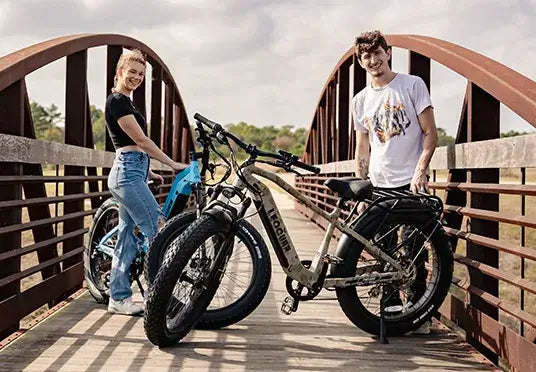
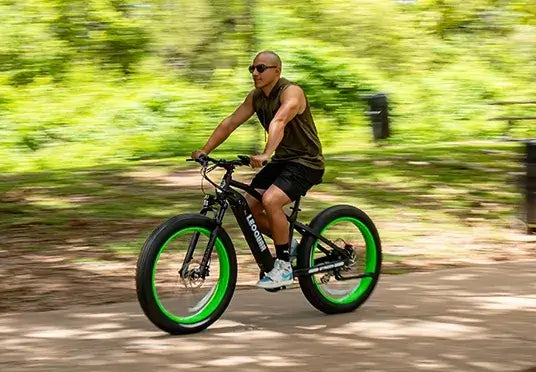
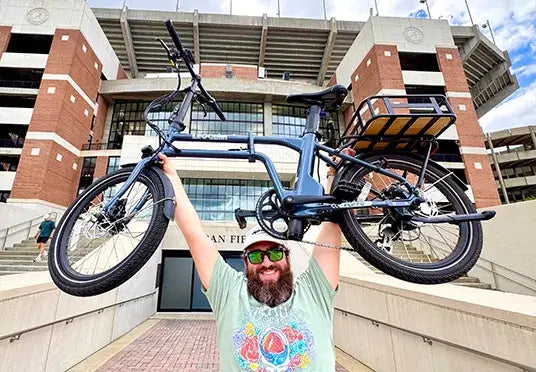
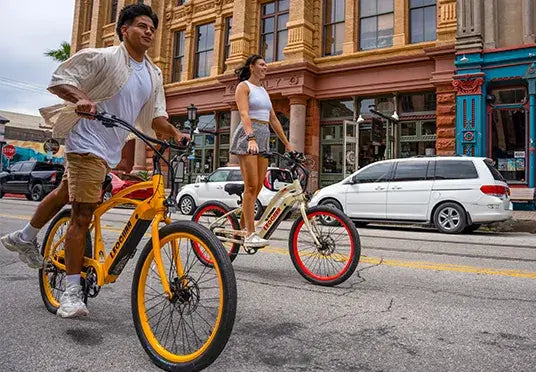
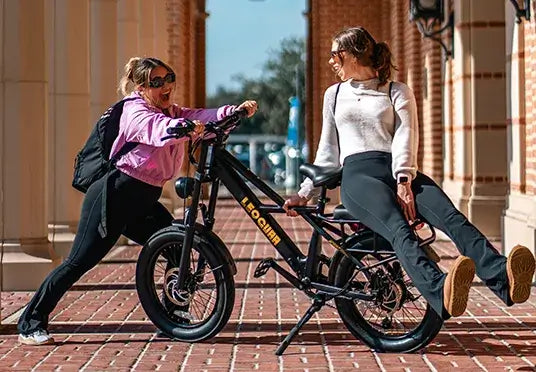
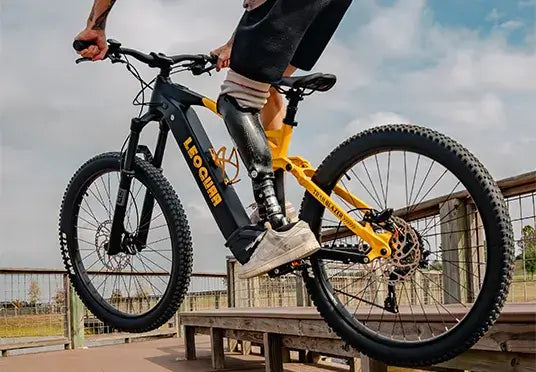
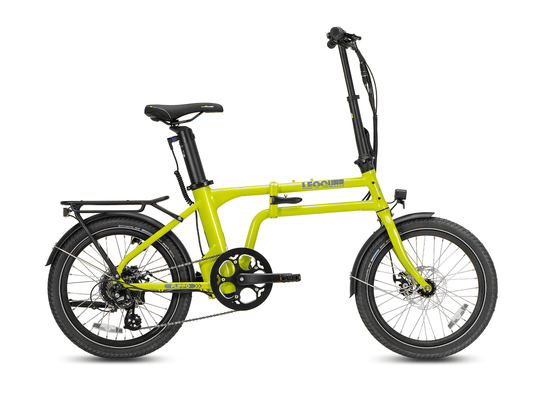
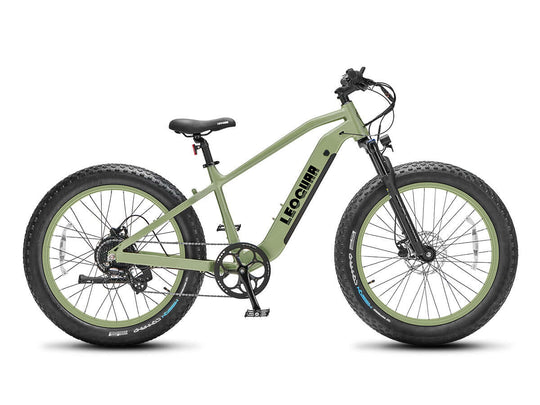
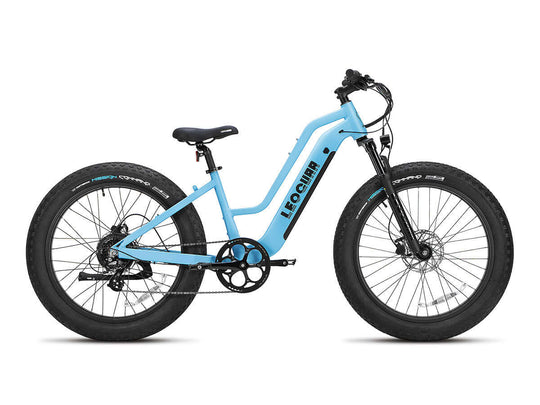
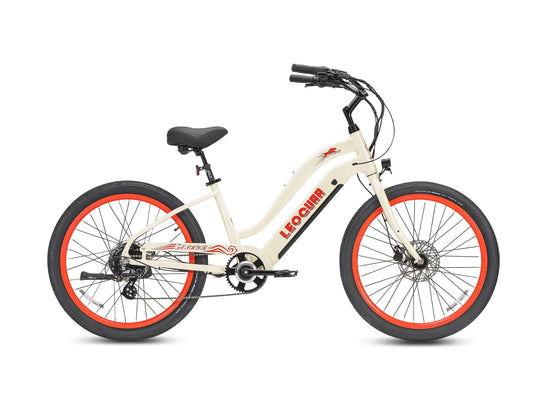
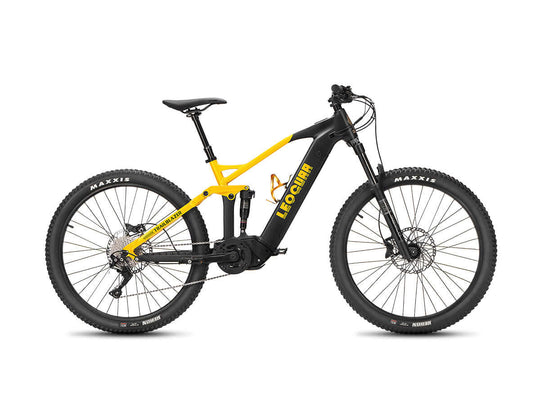
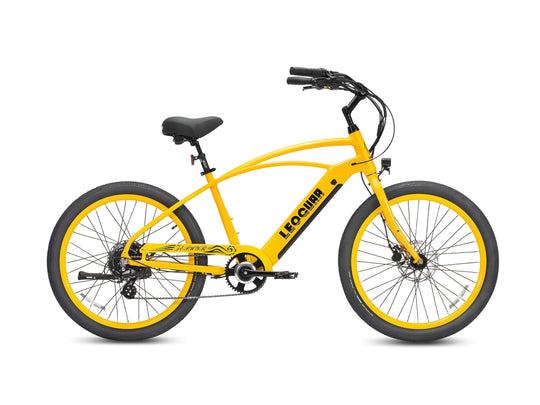
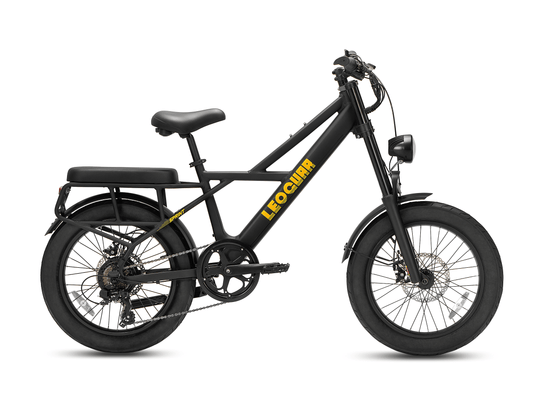
















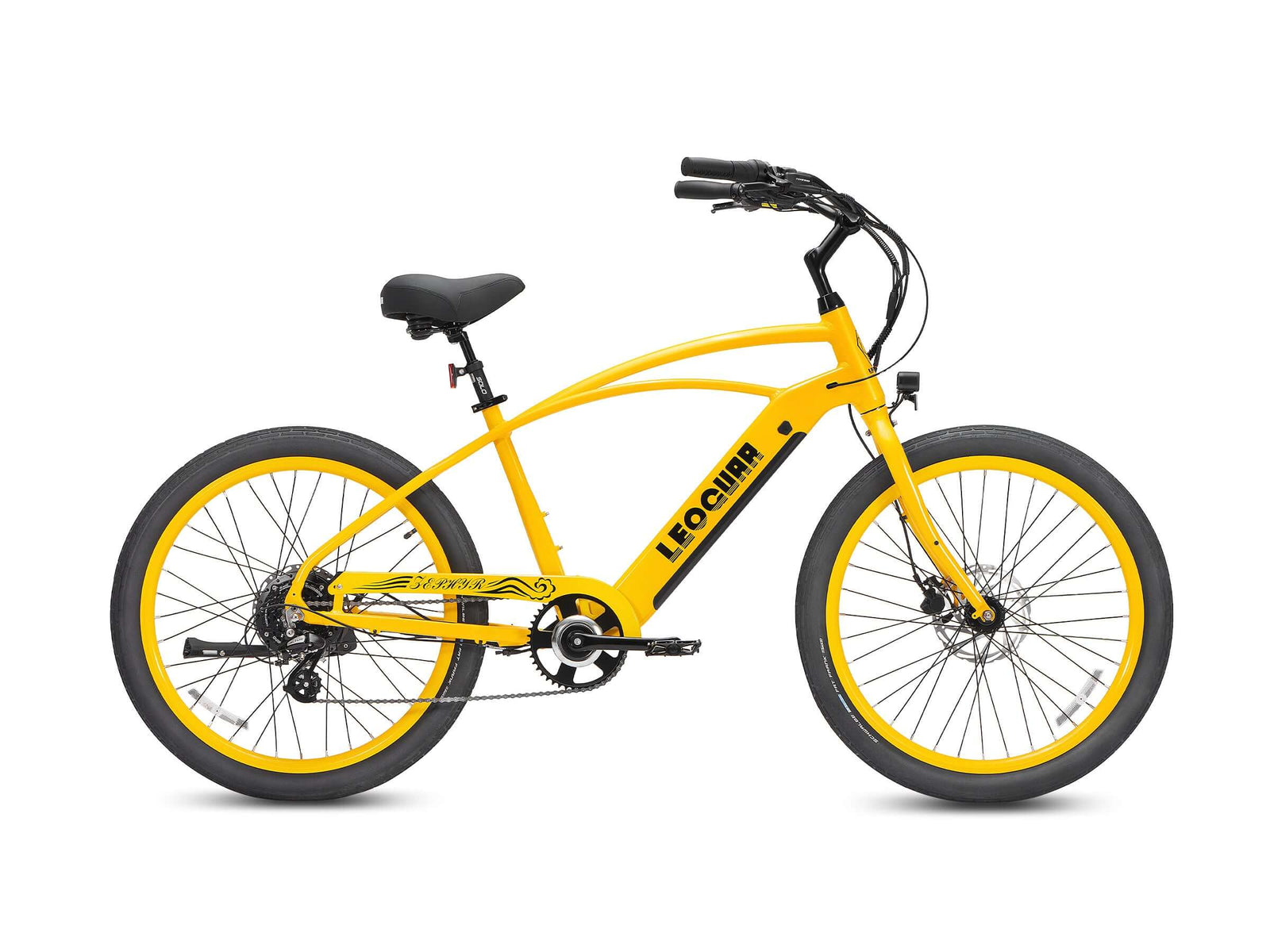








Leave a comment